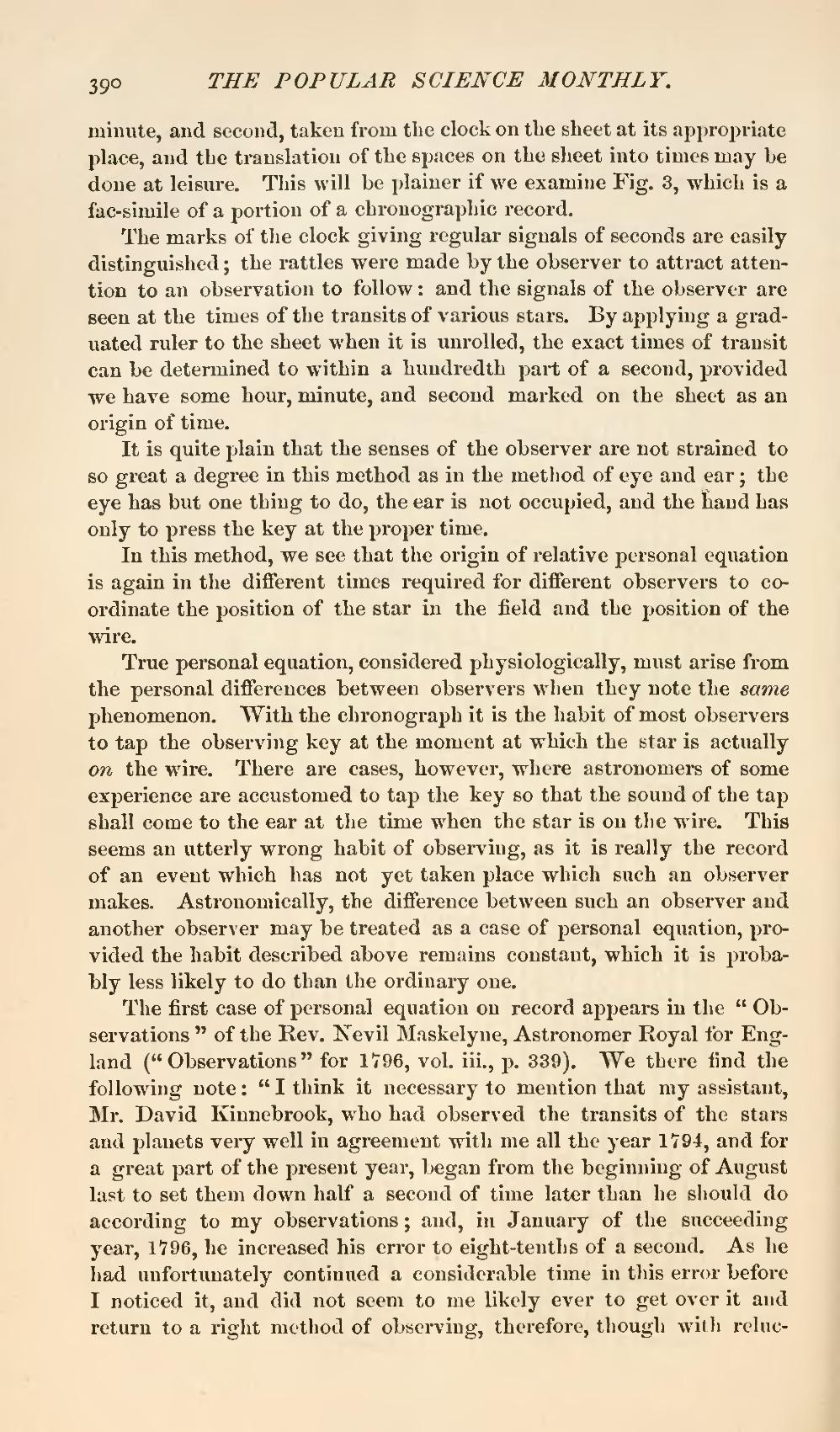minute, and second, taken from the clock on the sheet at its appropriate place, and the translation of the spaces on the sheet into times may be done at leisure. This will be plainer if we examine Fig. 3, which is a fac-simile of a portion of a chronographic record.
The marks of the clock giving regular signals of seconds are easily distinguished; the rattles were made by the observer to attract attention to an observation to follow: and the signals of the observer are seen at the times of the transits of various stars. By applying a graduated ruler to the sheet when it is unrolled, the exact times of transit can be determined to within a hundredth part of a second, provided we have some hour, minute, and second marked on the sheet as an origin of time.
It is quite plain that the senses of the observer are not strained to so great a degree in this method as in the method of eye and ear; the eye has but one thing to do, the ear is not occupied, and the hand has only to press the key at the proper time.
In this method, we see that the origin of relative personal equation is again in the different times required for different observers to coordinate the position of the star in the field and the position of the wire.
True personal equation, considered physiologically, must arise from the personal differences between observers when they note the same phenomenon. With the chronograph it is the habit of most observers to tap the observing key at the moment at which the star is actually on the wire. There are cases, however, where astronomers of some experience are accustomed to tap the key so that the sound of the tap shall come to the ear at the time when the star is on the wire. This seems an utterly wrong habit of observing, as it is really the record of an event which has not yet taken place which such an observer makes. Astronomically, the difference between such an observer and another observer may be treated as a case of personal equation, provided the habit described above remains constant, which it is probably less likely to do than the ordinary one.
The first case of personal equation on record appears in the "Observations" of the Rev. Nevil Maskelyne, Astronomer Royal for England ("Observations" for 1796, vol. iii., p. 339). We there find the following note: "I think it necessary to mention that my assistant, Mr. David Kinnebrook, who had observed the transits of the stars and planets very well in agreement with me all the year 1794, and for a great part of the present year, began from the beginning of August last to set them down half a second of time later than he should do according to my observations; and, in January of the succeeding year, 1796, he increased his error to eight-tenths of a second. As he had unfortunately continued a considerable time in this error before I noticed it, and did not seem to me likely ever to get over it and return to a right method of observing, therefore, though with reluc-
